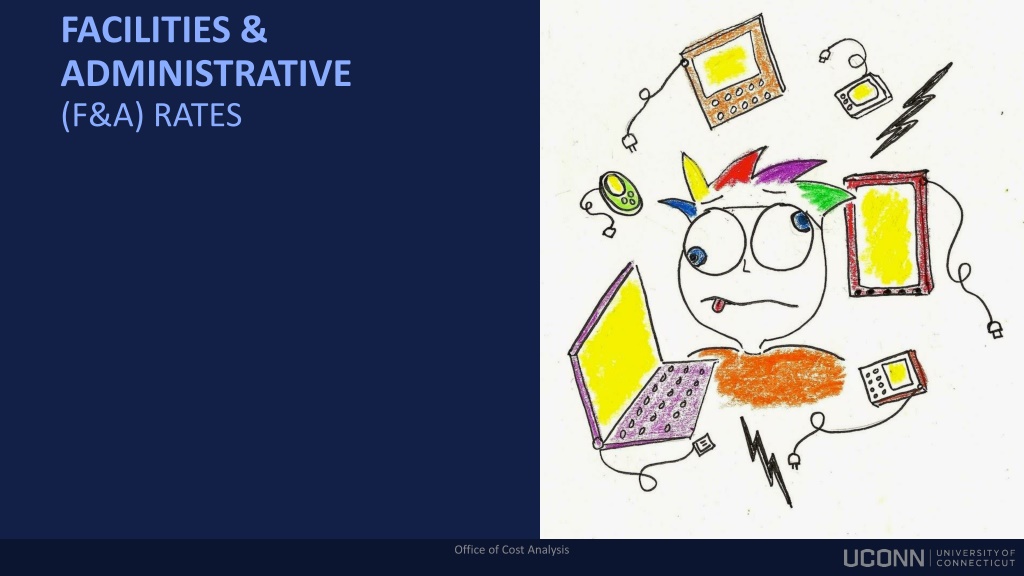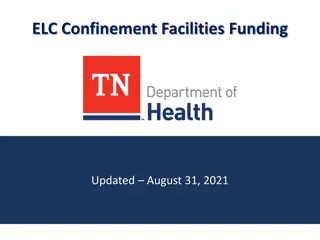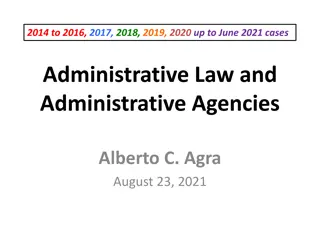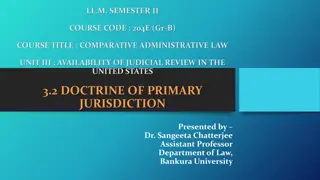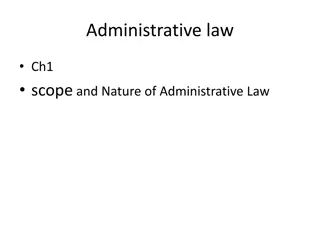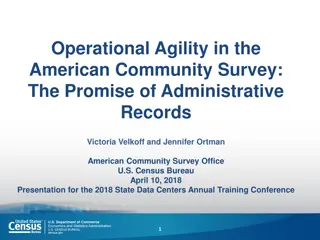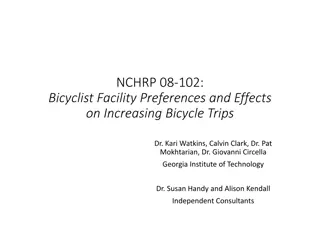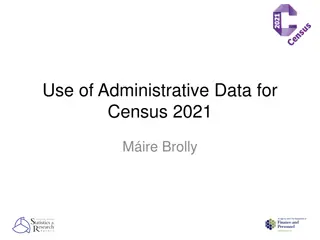Understanding Facilities and Administrative (F&A) Rates in Research Funding
Facilities and Administrative (F&A) rates, also known as indirect costs, are crucial in research projects to cover overhead expenses. The Office of Cost Analysis calculates and negotiates F&A rates with the federal government, ensuring fair cost recovery. This article explains the distinction between direct and indirect costs, the allocation of F&A costs, and the capping of administrative costs by the Federal Government.
Download Presentation

Please find below an Image/Link to download the presentation.
The content on the website is provided AS IS for your information and personal use only. It may not be sold, licensed, or shared on other websites without obtaining consent from the author. Download presentation by click this link. If you encounter any issues during the download, it is possible that the publisher has removed the file from their server.
E N D
Presentation Transcript
FACILITIES & ADMINISTRATIVE (F&A) RATES Office of Cost Analysis
FACILITIES & ADMINISTRATIVE (F&A) RATES Facilities and Administrative costs, also sometimes referred to as indirect costs, are the overhead costs of the University. The F&A rate is a cost recovery mechanism designed by the federal government to ensure it bears its fair share of the costs of research. Office of Cost Analysis (OCA) is responsible for the calculation, submission and negotiation of F&A rates with the Department of Health and Human Services (DHHS). F&A costs represent a recovery of costs already incurred by the institution. Office of Cost Analysis
FACILITIES & ADMINISTRATIVE (F&A) RATES All sponsored projects include two types of costs: those that are directly attributed to the project and those that are incurred indirectly for campus/departmental support and facilities management. Indirect Costs are incurred for common or joint objectives and cannot be readily or specifically identified with a project or activity. Direct Costs can be readily and specifically identified with a particular sponsored project, instructional activity, or any other institutional activity. Examples of indirect costs include administrative salaries, office expenses, utilities, and other facilities costs including depreciation. Examples of direct costs include salaries and wages, fringe benefits, consumables, purchased services, travel and certain equipment. Office of Cost Analysis
FACILITIES & ADMINISTRATIVE (F&A) RATES The Facilities components of indirect costs account for more than half of our current F&A rate for research. Facilities costs are allocated to Research, Instruction, Other Sponsored Activities and Other Institutional Activities based on a space study. We survey the top 30 research departments, which account for almost 90% of the University s research dollars spent. Accuracy and consistency of the space coding is critical. Office of Cost Analysis
FACILITIES & ADMINISTRATIVE (F&A) RATES The Administrative components of indirect costs are capped at 26% by the Federal Government (since 1991). We are still required to calculate our actual Administrative costs. Compliance and other regulatory costs continue to grow, but cannot be recovered on sponsored projects due to the cap. Examples include central functions such as President s Office, HR, Finance, OVPR as well as departments administration, including deans offices. Office of Cost Analysis
THE F&A RATE CALCULATION PROCESS Audited Financial Statements MTDC Exclusions: Total Costs Scholarships/Fellowships Capital Expenses Sub-agreements >$25K Fringe blended vs Actual Accounts F&A Cost Pools: Adjustments and Transfers Depreciation Operations and Maintenance Review for Unallowable Expenses Interest Expense General Administration Direct Cost Bases: Departmental Administration Instruction and Dept. Research Organized Research Other Sponsored Activities Assign Expenses to F&A Pools and Direct Bases Sponsored Program Admin. Library Allocations Office of Cost Analysis
FACILITIES & ADMINISTRATIVE (F&A) RATES Let s look at an example. Refer to below assumptions: Total Facilities costs attributed to research = $37,050,000 Facilities costs/MTDC = Facilities rate of 39% Assignable university square feet = 8,000,000 Space coded to research = 6% or 480,000 sq. ft. Modified Total Direct Costs (MTDC) = $95,000,000 Total Administrative MTDC = $100,000,000 Total Admin/MTDC = Admin rate of 44.70% Calculated F&A rate with Admin cap = 65% Office of Cost Analysis
FACILITIES & ADMINISTRATIVE (F&A) RATES SUMMARY: OBTAINING AN F&A RATE AGREEMENT Calculation and Submission of Rate Federal Review and Negotiation Space Survey Treatment of Costs Cognizant agency (DHHS) reviews the Prepare standard Functional space survey Identify F&A, direct and unallowable F&A rate calculation and identify submission documents (determine Organized costs. disallowances based on interpretation and supporting Research (OR ) sq. ft.). Ensure consistent treatment of costs. of Federal guidelines. schedules. Typically starts during Ensure that costs are allowable and On-site space survey review including spring of base year. For Rates are submitted at allocable. interviews of Principal Investigators (PI). example, since our base the end of the following Must comply with OMB s Uniform year is FY22, we started fiscal year as it takes time Negotiate final F&A rate. Guidance. our space survey April to summarize all costs Federal Review estimated to be 2022. Requires Audited Financial Statements, and adjustments, conducted in the spring of 2024 for which we typically complete by including finalizing space base year 2022. December after end of the fiscal year. survey results. Final negotiated rate effective 7/1/24. Office of Cost Analysis
FACILITIES & ADMINISTRATIVE (F&A) RATES Cognizant agencies (for UConn, DHHS) generally negotiate lower rates than university proposed rates despite applying consistent federal costing principles. Please see below result of F&A survey conducted by Council on Government Relations (COGR). Negotiated rates are usually lower as DHHS may deem research percentages in labs to be lower than what was indicated by PI s during the space survey. DHHS determines this through their site visits during the audit phase. Any discrepancy is extrapolated to the whole population resulting in a lower overall research (F&A) rate. We may also negotiate a lower rate than what was calculated and proposed to make grant proposals by PI s more competitive. Office of Cost Analysis
